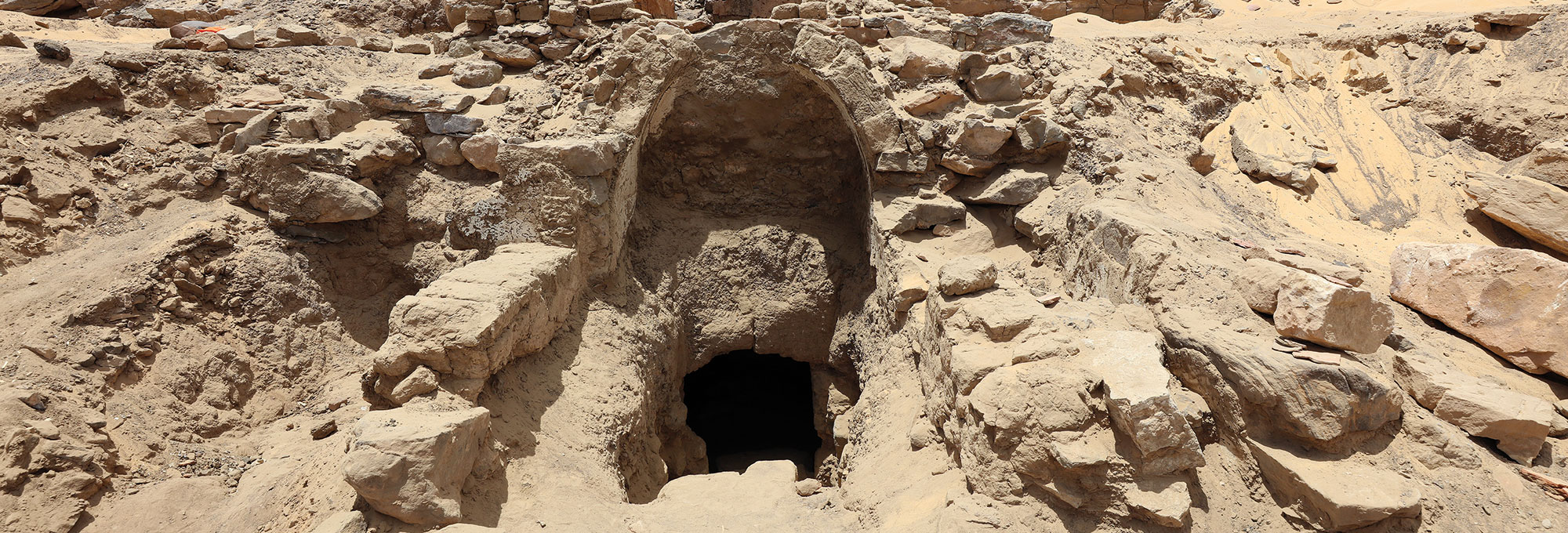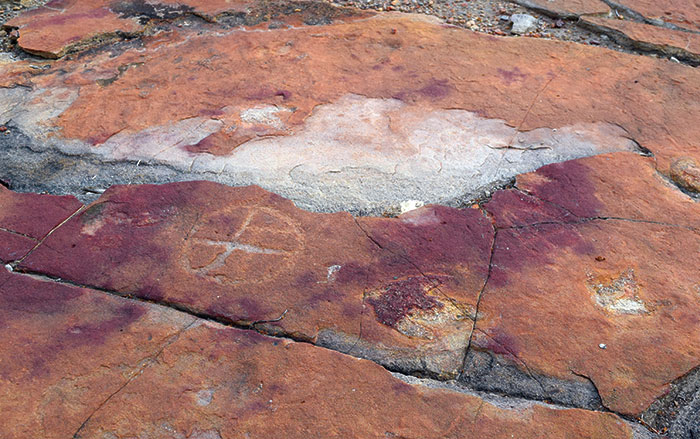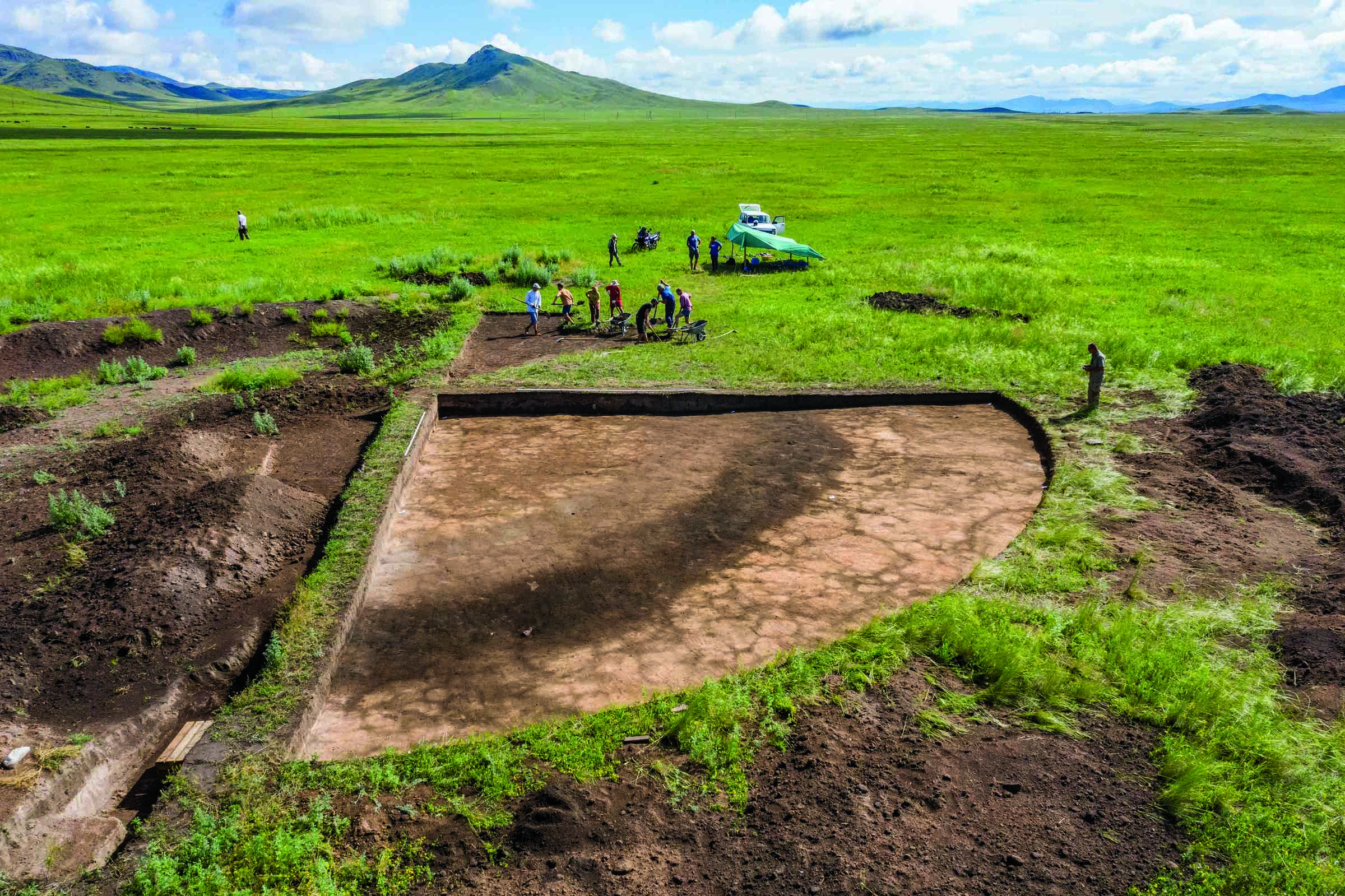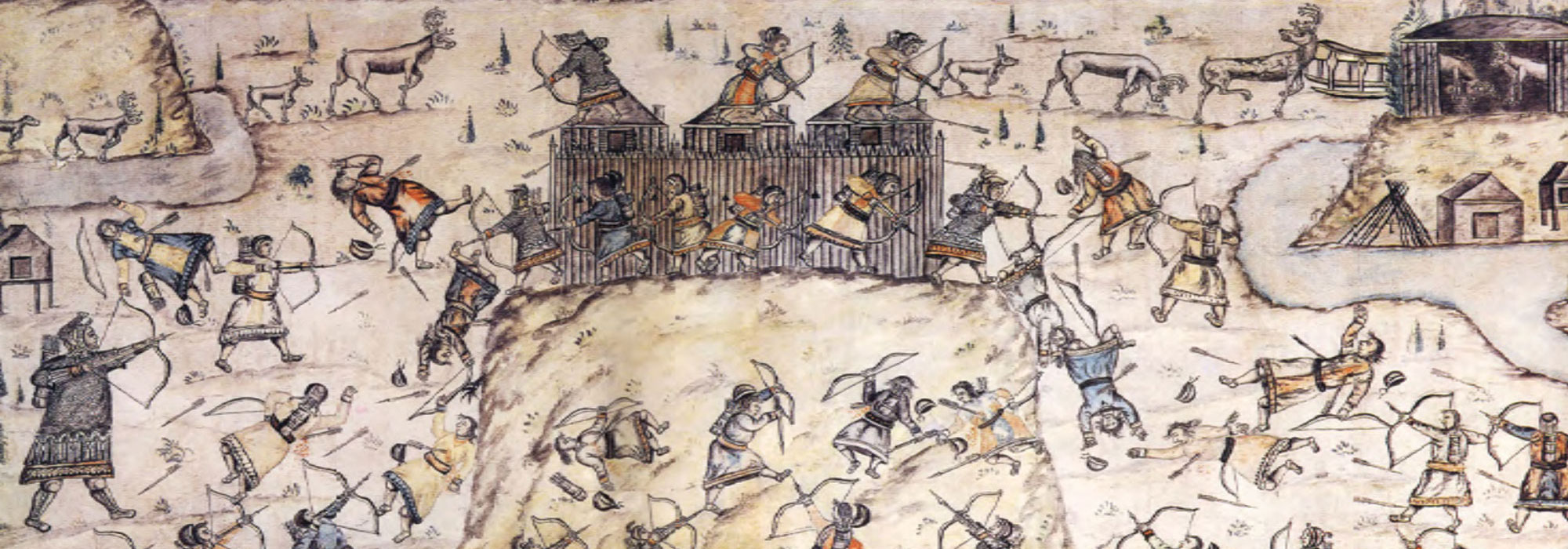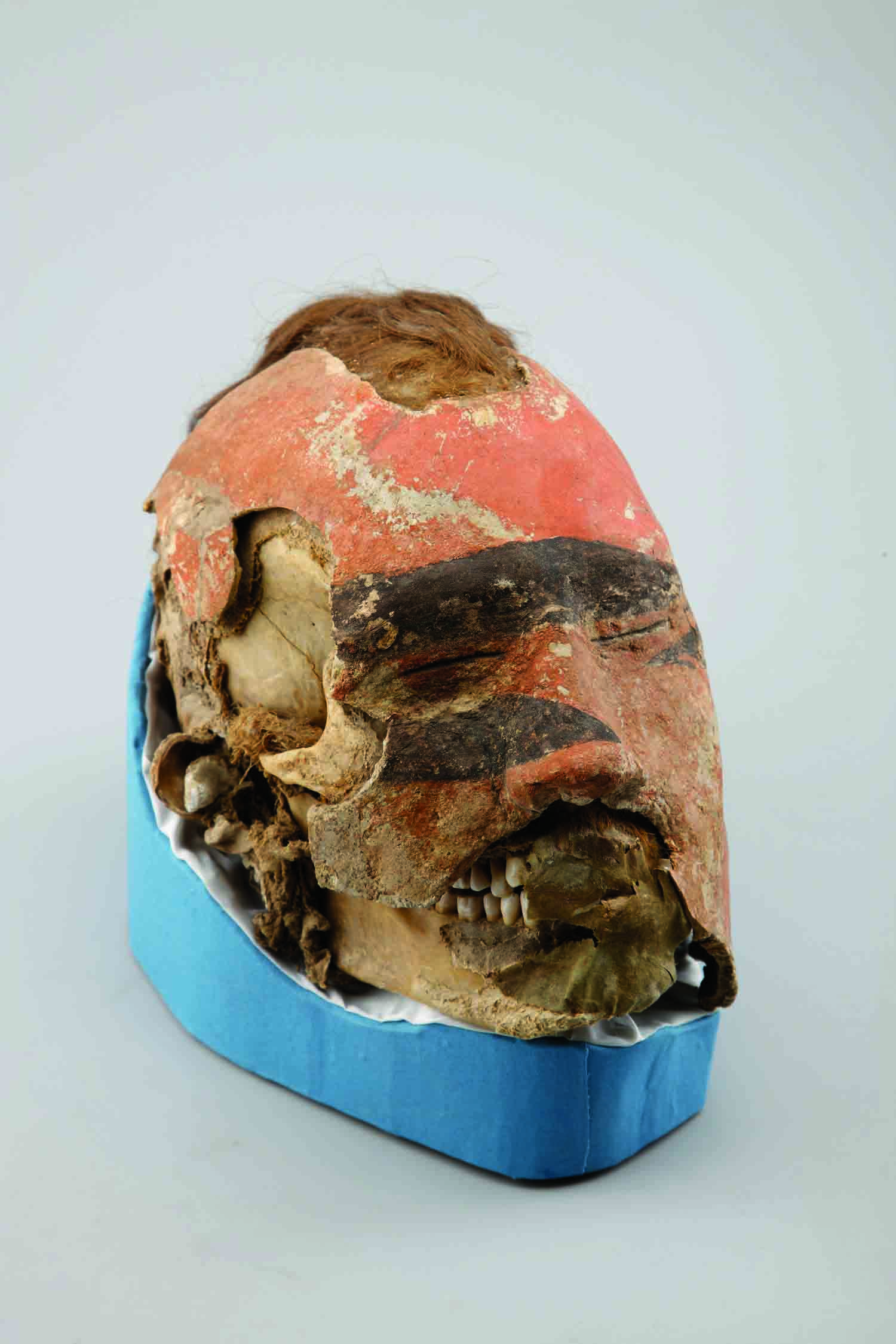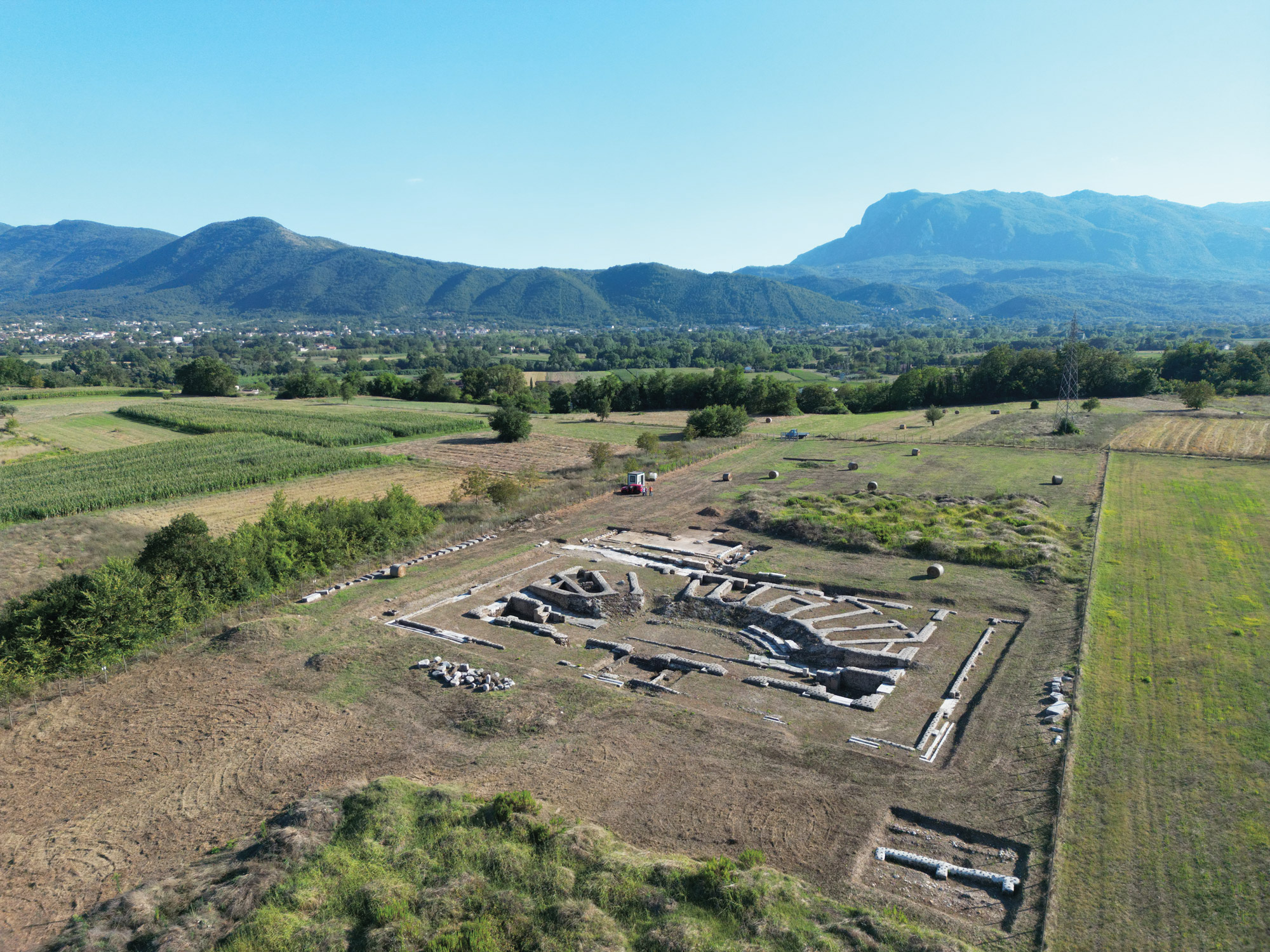
A discovery in a remote region of Siberia has revealed evidence that the once-obscure origins of the Scythians lie much farther east than previously envisioned. The Scythians are best known as nomadic warriors whose horse-centered culture flourished from around 900 to 200 b.c. across the Eurasian Steppe and into Eastern Europe. The fifth-century b.c. Greek historian Herodotus describes a ritual the Scythians practiced after royal funerals in which both men and horses scholars call “spectral riders” were sacrificed and placed atop the ruler’s burial mound. While excavating at a site in the Republic of Tuva in southern Siberia, a team of archaeologists including Gino Caspari of the Max Planck Institute of Geoanthropology and Timur Sadykov and Jegor Blochin of the Russian Academy of Sciences unearthed fragmentary human and animal remains atop a late ninth-century b.c. mound known as Tunnug 1. They determined the remains belonged to several people and 18 horses, which they believe were all sacrificed to honor an elite person buried inside. According to Caspari, this scene mirrors the ritual Herodotus describes. “As we move farther away from the territories that were known to the Greeks, the accounts become more fantastic and wilder,” he says. “Thus, it’s a bit surprising that we found such an accurate reflection of an ancient text so far east.”
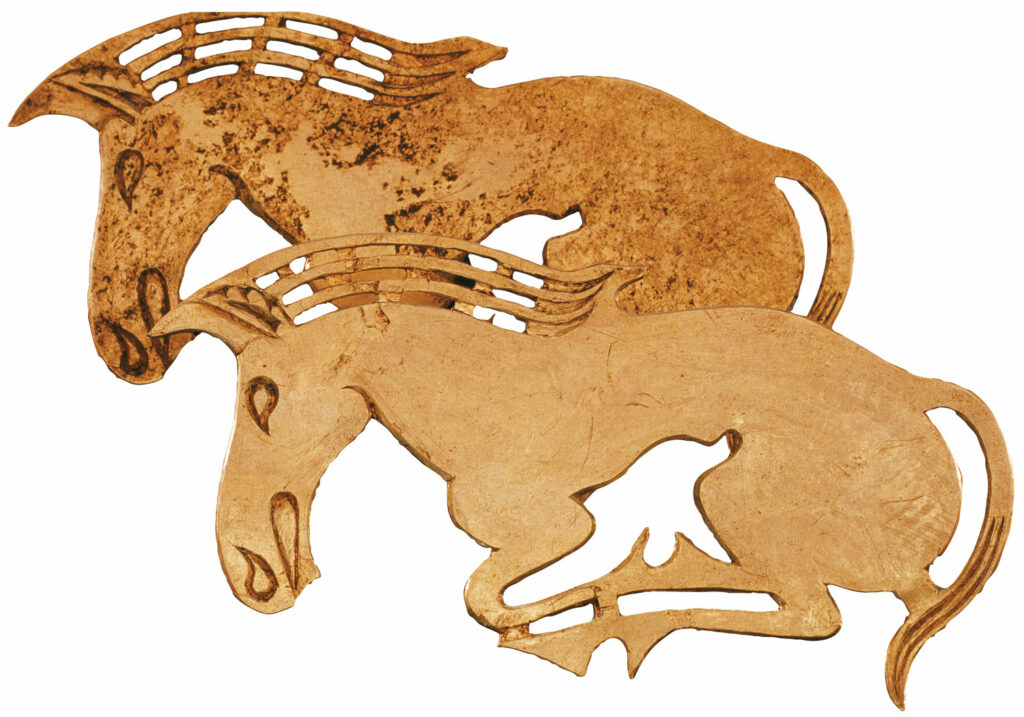
The team was fortunate to find evidence of Scythian culture, including horse gear, weapons, and artifacts depicting animals, as very few monuments similar to Tunnug 1 are known and they’ve been difficult to locate in the vast, featureless steppe landscape. “We got lucky,” Caspari says. It’s not simply the presence of the horses that is important, he adds. Also significant are the find’s implications for understanding how rapidly Scythian culture spread from its predecessors in Mongolia, where the extensive use of domesticated horses in burial rituals and the construction of colossal stone monuments to the dead were pioneered. “It’s another puzzle piece showing how ideas traveled once horses were in widespread use,” Caspari says. “Today, places like southern Siberia feel like a forgotten hinterland, but this discovery is a reminder that this wasn’t necessarily the case for prehistory.”




